Mangroves, Guyana’s first line of coastal sea defence, are commonly recognised as the overgrown vegetation encumbering the view of Guyana’s coastline and the Atlantic Ocean. But these plants are essential to Guyana and the world – even if many don’t know it.
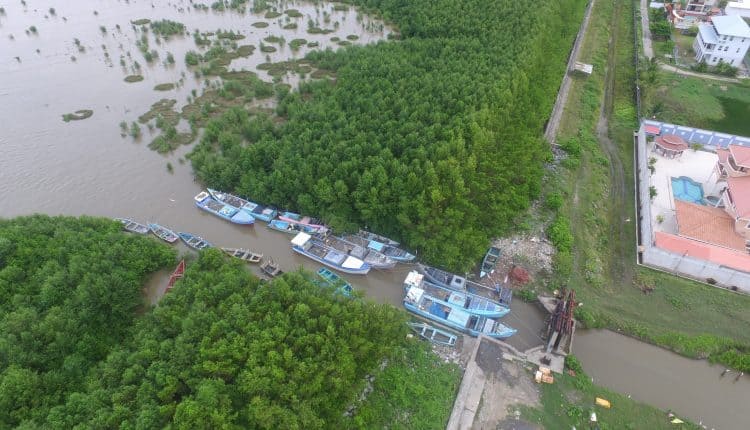
In May 2021, reports surfaced that large swathes of mangroves were cleared along the coastal communities of Malgre Tout and Versailles on the West Bank of Demerara (WBD). Those mangroves were cleared to make way for a new shore base facility.
The removal of the mangroves sparked much public furore and residents feared flooding. It also heightened questions about whether Guyana’s new exploits, particularly in the oil and gas industry, can be managed alongside environmental protection efforts.
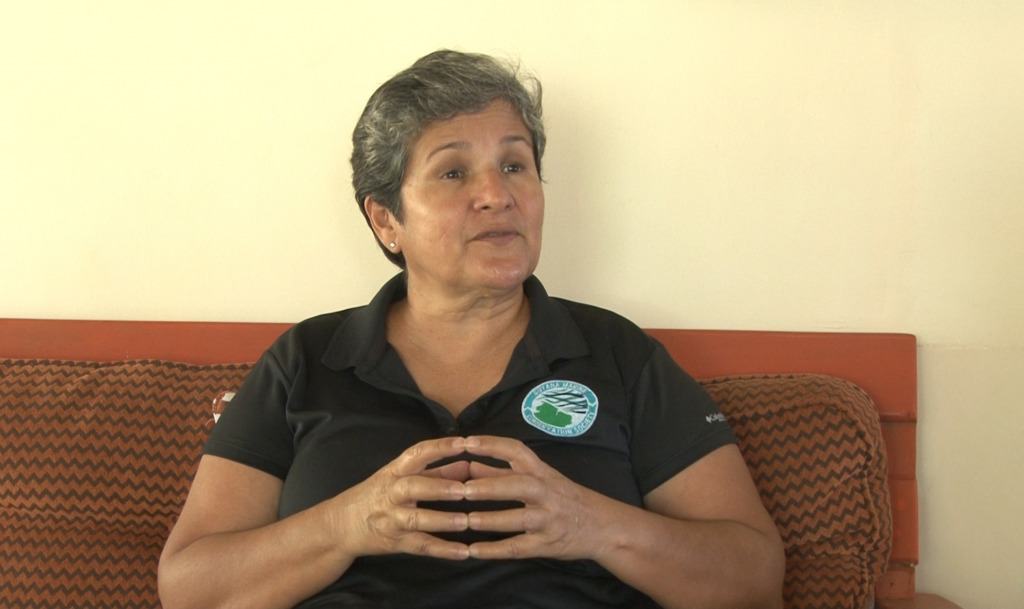
Environmentalist Annette Arjoon-Martins believes that Guyana has no choice but to pursue profit-making ventures while safeguarding mangroves and the environment.
“While I don’t think this is the ideal solution, we don’t have a lot of other options presently.
“And Guyana has such a remarkable history of managing its terrestrial resources in a very environmentally-responsible manner that we don’t have to reinvent the wheel,” she said.
Arjoon-Martins, for years, has championed the protection of Guyana’s mangroves.
In 2009, she chaired the European Union-funded Guyana Mangrove Restoration Project which focused on restoring mangroves along Guyana’s vulnerable coast while supporting sustainable jobs.
Now, with the Guyana Marine Conservation Society (GMCS), she leads efforts to protect mangroves further inland – at an area known as the Barima-Mora Passage in Guyana’s northernmost region, Region One (Barima-Waini).
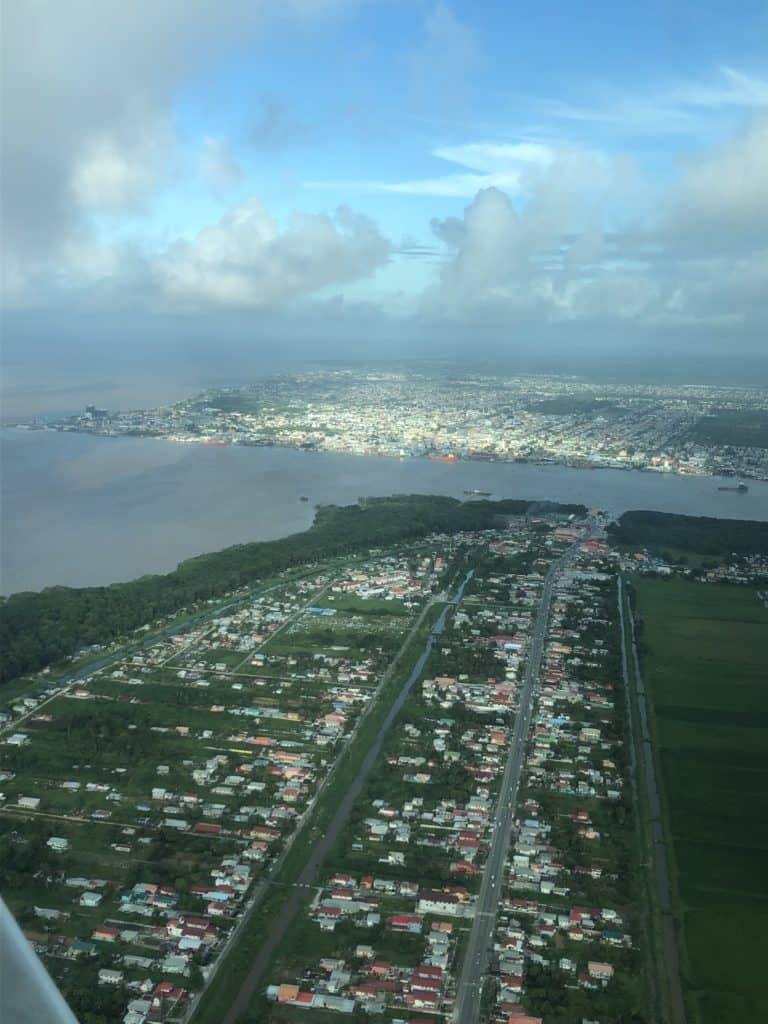
At the Barima-Mora Passage, as was the case with the restoration project, Arjoon-Martins emphasises that community support is key. There is a huge focus on raising awareness of the importance of mangroves, among children.
Providing alternative sources of income, so that mangroves are not destroyed, is another goal. Through a project funded by the Inter-American Development Bank (IDB) Lab, some community members will be involved in beekeeping, as one income-generating venture.
Other green enterprises, Arjoon-Martins said, will be developed.
The environment again draws attention to pragmatic solutions.
She explained that people cannot be asked to stop destroying the mangroves they depend on for their livelihoods if they are not provided with alternatives.
Altogether, these efforts aren’t just pursued for the sheer love of mangrove forests. The environmentalist, who heads the GMCS, knows all too well the importance of protecting mangroves on the coast, in the Barima-Mora Passage, and elsewhere.
First, they help protect against flooding – a threat that is one of Guyana’s biggest woes. Widespread flooding along this coastline in 2005 wiped out more than half of the country’s Gross Domestic Product (GDP). In 2021, nationwide flooding caused the loss of billions.
The ongoing climate crisis and resulting rising sea-levels provide no relief to the country – especially since its coastline, where about 90 per cent of the population live and work, is about six feet below sea level.
So, the environmentalist explains, the mangroves planted beyond a narrow low coastal plain are, literally, Guyana’s first line of defence against the increasingly concerning rising sea-level.
But that’s not all.
Mangroves are important to the communities where they are planted. On the coast, fishermen value the mangroves because they provide an important nursery for fish.
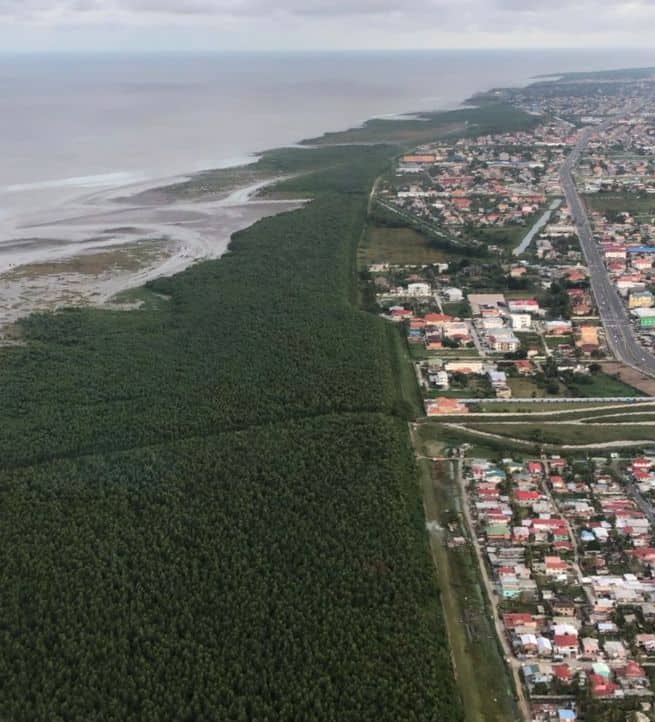
In the Barima-Mara Passage, Arjoon-Martins says that the indigenous Warrau community depends on the mangroves for their protein – that is, the fish and crab found among the plants. Here too, endangered animal species find a home.
There is a global value, too. The environmentalist highlighted that Guyana’s mangroves sequester five times more carbon dioxide, an environmentally-unfriendly gas, than other forests. Therefore, protecting these mangroves means protecting the earth.
With all of these benefits, protecting mangroves seems to be a no-brainer. Somehow, though, this remains a complicated situation.
Despite objections, Guyana’s Public Works Minister Juan Edghill backed the removal of the mangroves at Malgre Tout/ Versailles last year in favour of developmental efforts.
“Development along the Demerara River to facilitate the new wave of development will mean mangroves will be displaced… that development shouldn’t be sabotaged, it should be encouraged,” the minister said at a press conference in May 2021.
He added, “Development comes with changes.”
The development he spoke of is linked to Guyana’s new oil and gas exploits.
Edghill also announced then that man-made structures aiding flood mitigation efforts would be established near the shore base facility. Those structures, he believed, would help to defend the coastal communities against flooding in the absence of the mangroves.
More than a year later, however, construction work at the facility has been stalled and mangroves have essentially reclaimed the land.
Some, nevertheless, argue that the destruction at Malgre Tout/Versailles signals what could happen as the country increasingly embraces expanded oil and gas production.
It has also been argued that those developmental efforts, especially when facilitating deforestation, conflict with Guyana’s longstanding commitment to environmental protection.
Guyana’s government, through the expanded Low Carbon Development Strategy (LCDS) 2030, seeks to avoid those environmental pitfalls and centre the preservation of the country’s natural patrimony in sustainable development efforts.
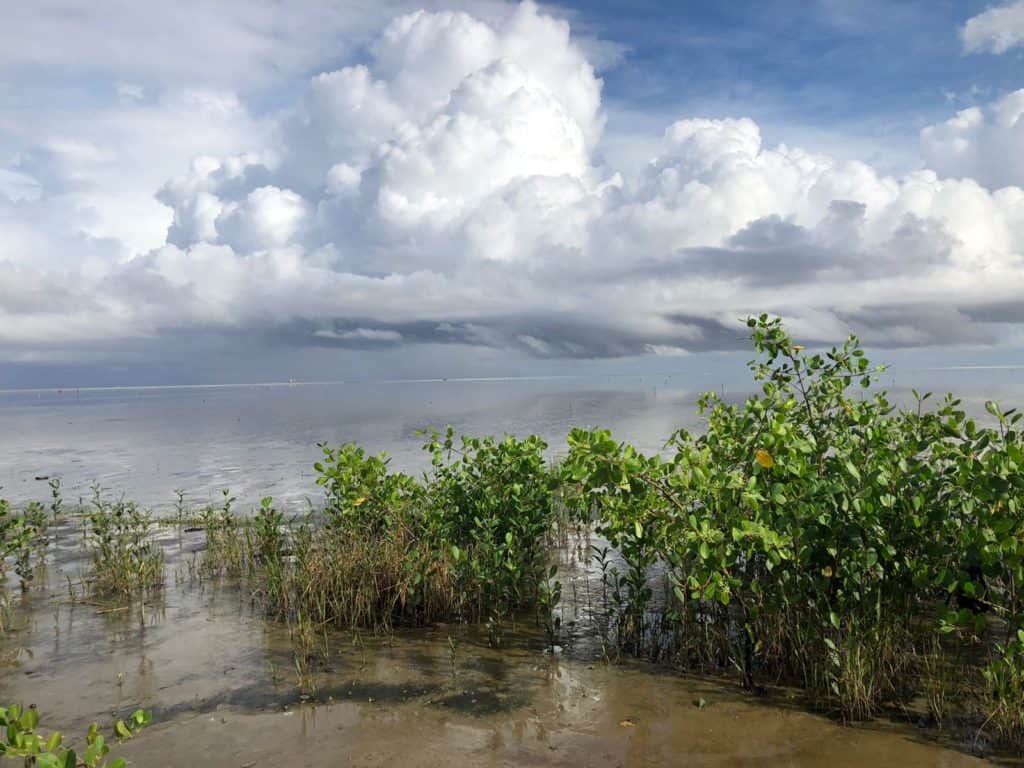
Is it possible?
The country has, for years, maintained a less than 0.5 per cent rate of deforestation – a figure lower than most tropical countries. Its intact forests store about 19.5 billion tonnes of carbon dioxide. Now, it is the world’s first country to be issued special jurisdictional carbon credits; some have already been sold to US oil giant Hess Corporation.
Though not directly related to mangroves, Arjoon-Martins believe this is important to consider since it demonstrates how the country is sustainably exploiting its resources.
Furthermore, the expanded LCDS now caters for watersheds, marine resources, and the blue economy – an expansion that includes mangroves, and one that the GMCS mirrors in its own newly-launched five-year strategic plan.
Oil companies, strangely or fortunately enough, have joined mangrove protection efforts too.
SBM Offshore, in collaboration with Guyana’s National Agricultural Research and Extension Institute (NAREI), launched a mangrove restoration project at the villages of Annandale/Friendship, along Guyana’s coastal plain.
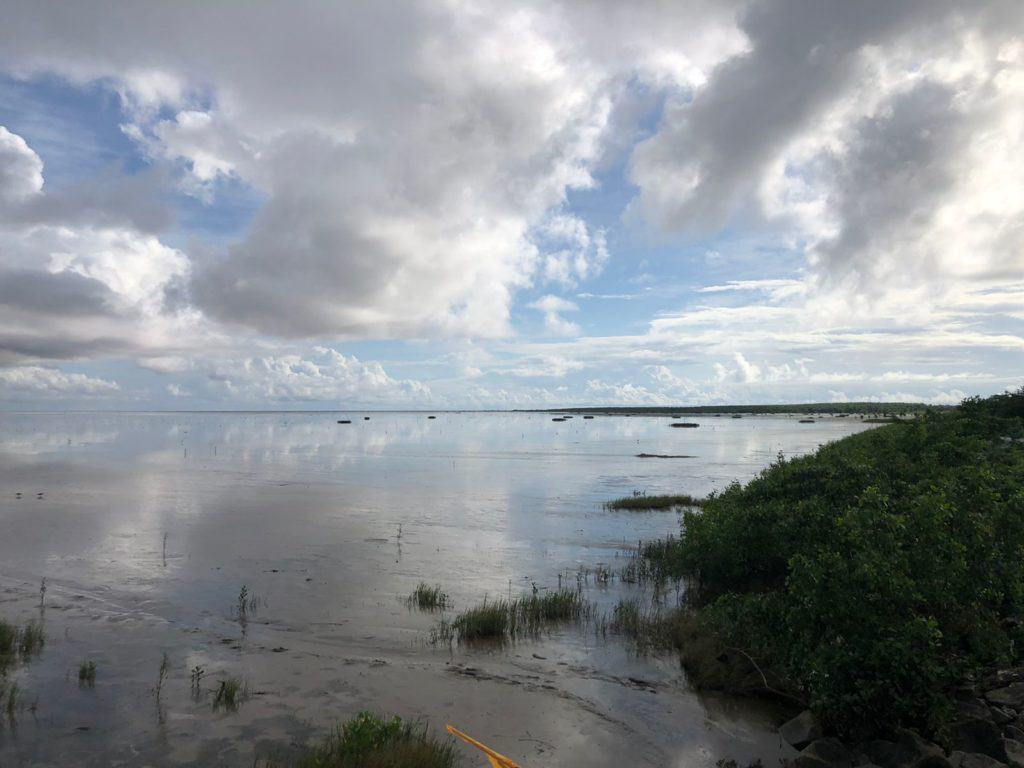
The project involves the construction of a 400-metre geotextile tube groyne field, and the propagation and planting of 20,000 mangrove seedlings.
NAREI, on its own, now mangroves the Mangrove Restoration Project. And with 7.5 million euros provided by the EU for further sea defence works, it is expected that larger swathes of mangroves will populate the coast in coming years.
Arjoon-Martins, reflecting on Guyana’s unique and possibly concerning situation, has some advice to give:
“We should continue restoration.
“… and what is really, really urgently needed is to make sure the land use and land management practices are pursued,” she said.





